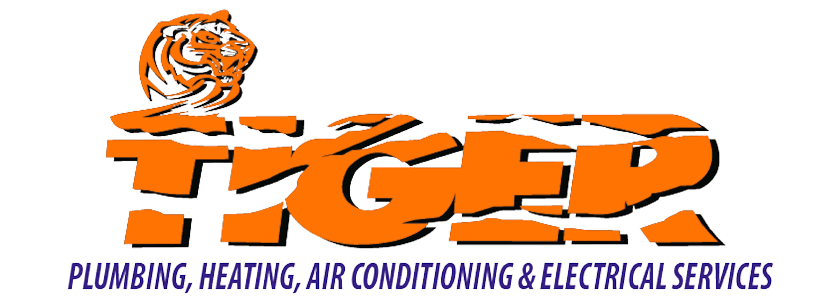How to Handle the Winter Humidity in Illinois
When winter rolls around, you start to think about how to adjust for this time of year. That can mean many things, from salting your driveway to prevent slick roads to turning off your air conditioner and switching your furnace on. However, when the temperature starts to dip outside, you may not think about how humid your air can be.
It can be challenging to find the right house humidity in winter. In many cases, the cold air can cause the indoor humidity to drop to very low levels, which can be unsafe for your home. However, when it’s cold outside, it’s likely the excess humidity will find its way into your home, increasing the indoor humidity levels.
Knowing how to handle either of these instances is important, especially if you’re a homeowner. There are many methods you can use to get the ideal indoor humidity in winter.

How Does Humidity Affect Air Quality?
There are many ways your indoor air quality can be affected by humidity during the winter. These humidity risks can have an impact on your health, daily comfort, and HVAC efficiency. That’s why, when making adjustments as the seasons change, it’s important to find the ideal indoor humidity in the winter for air quality.
Here are some downfalls of poor humidity levels in the winter:
- Mold Growth: High humidity levels can contribute to the growth of mold and mildew in your home. Mold spores thrive in moist environments, leading to potential respiratory issues and negatively impacting air quality.
- Poor Ventilation: Humidity can cause your ventilation system to operate less efficiently. When air doesn’t circulate well and there’s high humidity, pollutants and irritants can build up, significantly compromising air quality.
- Compromised Comfort: Excessive humidity can make your home feel uncomfortable, affecting your well-being. Discomfort due to high humidity levels may lead to an increased reliance on air conditioning, eventually leading to higher energy costs.
- HVAC System Efficiency: High humidity levels can strain HVAC systems. Over time, this may reduce the efficiency of your HVAC system in regulating temperature and humidity, further impacting indoor air quality.
What Should Indoor Humidity Be in Winter?
The ideal range of humidity is 30 to 50 percent in winter, so what happens if your humidity is outside these limits? Whether your home’s humidity levels are too low or too high, there are certain measures you can take to create the perfect balance.
What to Do When the Humidity Is Too Low
If you have low humidity in the house during winter, there are various methods you can take to increase these levels. Whether you will benefit from handy DIY tactics or consulting a professional HVAC technician, there are reliable ways to increase your home’s low humidity.
- Air-Drying Clothes Indoors: Instead of using a dryer, consider air-drying your clothes indoors. This will naturally add moisture to the air and will save you money on electricity.
- Boil Water: Boil water on the stove or use a kettle. As the water evaporates, it releases moisture into the air. To increase your comfort, add essential oils to the water for a more pleasant aroma.
- Get Houseplants: Indoor plants release moisture through a process called transpiration. Place some house plants strategically around your home to naturally increase humidity.
- Install a Whole-House Humidifier: Consider getting a whole-house humidifier integrated with your HVAC system. This can efficiently control humidity levels throughout your entire home.
What to Do When the Humidity Is Too High
While it’s more unlikely, high humidity in the house in winter is an issue that can plague many homes. Many of these issues have to do with your HVAC system or home’s structure. Having your home inspected by a professional can point out the blind spots so you can have a more comfortable home.
- Ensure Proper Ventilation: Use exhaust fans in kitchens and bathrooms. Additionally, open windows periodically to let fresh air circulate, promoting a healthier and more comfortable indoor environment.
- Seal Leaks: Identify and seal any leaks, gaps, or creaks in windows, doors, and walls to prevent outdoor moisture from entering your home.
- Install a Whole-House Dehumidifier: Consider installing a whole-house dehumidifier integrated with your HVAC system for comprehensive moisture control throughout your home. This can be an effective solution to maintain optimal humidity levels.
Devices That Help Obtain the Best Humidity Level for a Home in Winter

To effectively manage your home humidity in winter, it’s crucial to implement the right humidity control measures. While a single-room humidifier can address low humidity in a specific area, it falls short of providing a comprehensive solution for the entire house.
Consider installing a whole-house humidifier to address low humidity concerns throughout your entire home. This system is equipped to be controlled by a humidistat, offering precision in maintaining optimal humidity levels. Unlike single-room humidifiers, a whole-house humidifier provides a more holistic approach, ensuring that every corner of your house benefits from balanced moisture without the risk of creating localized excess moisture.
An alternative solution involves the use of an Energy Recovery Ventilator (ERV) rather than a Heat Recovery Ventilator (HRV). An ERV brings in fresh air and recovers moisture from the exhaust air, and transfers it to the incoming air. This innovative approach not only enhances indoor air quality by providing a reliable and constant supply of fresh air, but also helps manage humidity levels efficiently.
Turn to our professionals at Tiger Services, LLC, when you need help with poor Illinois humidity. We will inspect your home and help you find the best solution for your needs.
If you want to learn more about installing a whole-house humidifier in Collinsville, Springfield, Bloomington, and Peoria, Illinois, contact us to schedule an appointment.
Financing
Options
Winning Team





















